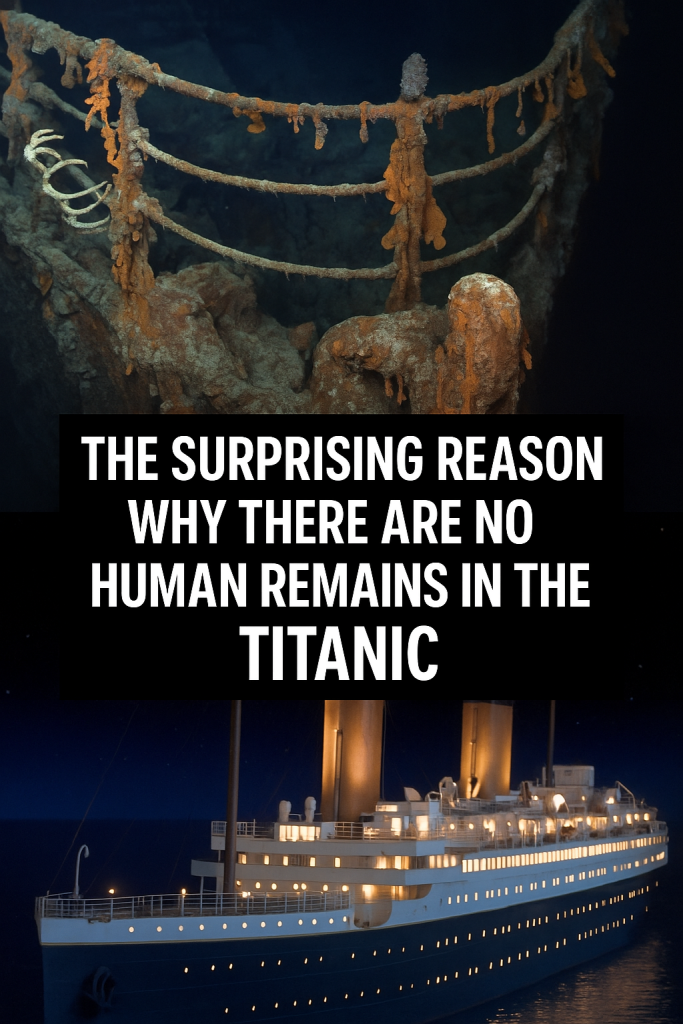More than a century after the Titanic sank into the icy depths of the North Atlantic, a long-standing mystery continues to captivate historians, researchers, and enthusiasts alike: why are there no human remains at the Titanic wreck site?
Despite the tragic loss of over 1,500 lives when the “unsinkable” ship met its fate in 1912, recent scientific investigations and expeditions have confirmed a surprising reality—there are remarkably no preserved human bodies or skeletons resting within or around the shipwreck. This absence has puzzled experts and the public for decades.
The explanation lies in the extreme conditions at the ocean floor and natural decomposition processes over time. According to the latest research conducted by marine biologists and oceanographers in 2024, the harsh environment more than 12,500 feet below sea level plays a crucial role in the complete disappearance of human remains.
The site of the Titanic wreck is enveloped in near-freezing temperatures, total darkness, and crushing pressure. Marine creatures, particularly scavenging species such as amphipods—small, shrimp-like crustaceans—have been documented to consume organic material rapidly. Detailed analysis suggests these scavengers accelerated the decomposition of any human tissues so thoroughly that no bones or remains have been found, even during deep-sea expeditions using remotely operated vehicles (ROVs).
In addition, the passage of time has amplified these effects. Over the past 112 years, the bodies that initially sank into the deep ocean were likely subjected to disintegration caused by these scavengers combined with natural decay and sediment coverage. Unlike shipwrecks in shallower waters where cold temperatures and low oxygen can preserve remains, the Titanic lies in a dynamic environment with biological activity strong enough to eliminate traces of human bodies.
Adding another layer to this understanding, recent sonar imaging and photographic surveys of the wreck site reveal that while the ship’s structure remains mostly intact, it is covered with rust formations often referred to as “rusticles” formed by iron-eating bacteria. These bacteria contribute to the degradation of the ship but do not account for the absence of human remains, highlighting that biological scavengers are likely the primary agents in this process.
This discovery reframes how we think about underwater archaeology and the preservation of historical shipwrecks — showing that the ocean’s ecosystem can erase human traces in a matter of years, not centuries.
The implications are significant not only for preserving the Titanic’s legacy but also for understanding the limits of forensic science in deep-sea wreck investigations. Experts emphasize that the case of the Titanic serves as a poignant reminder of the ocean’s power and the ephemeral nature of human existence beneath its waves.
In sum, the surprising reason for the absence of human remains in the Titanic wreck lies in the efficient, natural recycling of organic matter by scavengers in the deep ocean environment combined with the relentless passage of time. While the Titanic itself remains an enduring symbol of tragedy and human hubris, the oceans continue their quiet work of erasing the physical traces of those who perished on that fateful night.
As technology advances, future explorations may reveal more about the wreck’s condition, but the mystery of the missing bodies stands as a powerful testament to nature’s ultimate reclaiming of life lost beneath the sea.



